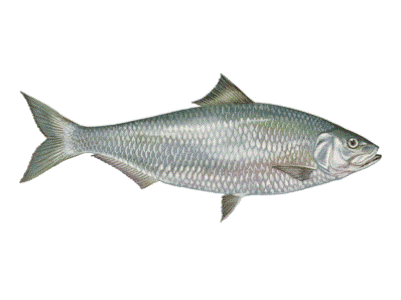
The main stem of the Delaware River is the longest undammed river east of the Mississippi, providing an unobstructed path for migratory fish extending over 300 miles.
The river is a boundary water shared by Pennsylvania and New Jersey. In general, the two state’s borders follow the river’s centerline.
As the Delaware River becomes tidal, it forms the border along northeastern Delaware. While fishing on the Delaware, anglers are required to comply with the regulations of the state in which they are located, regardless of their residency or point of boat launching.
Upper Delaware River
The river provides refuge for a wide range of fish and wildlife. In its upper reaches anglers fish for wild trout, carp, smallmouth bass, rock bass, sunfish, walleye, and other species of freshwater fish.
In spring, the Upper Delaware is noted for its American shad, hickory shad, and river herring spawning runs. A stretch of the river from the confluence of the East and West branches downstream to Milrift, Pennsylvania has been designated as a National Wild and Scenic River.
Located along the Delaware River northwest of Trenton, Bulls Island Recreation Area is one of the New Jersey’s most popular recreational areas. The 80-acre forested island is a popular area for fishing, boating, wildlife watching, hiking, and other recreation. Bulls Island Recreation Area includes a pedestrian bridge crossing to Pennsylvania.
Near Philadelphia, the Schuylkill River converges with the Delaware.
Delaware River Tributaries
A number of Delaware River tributaries are suitable for fishing and exploring. Because of their small size and shallow depths, many of these warm water streams and creeks are only accessible on foot or by kayak, paddleboat, or other small craft.
Often overlooked by anglers, warm water streams and creeks support populations of sport fish including smallmouth bass, largemouth bass, rock bass, redbreast sunfish, green sunfish, bluegills, pumpkinseed, channel catfish, and bullheads.
Anglers occasionally encounter rainbow, brown, and brook trout, striped bass, white perch, redfin pickerel, northern snakeheads, and other fish in tributaries of the Delaware.
Many of the Delaware’s warm water streams contain diverse populations of small fish including longnose dace, blacknose dace, cutlips minnow, silvery minnow, common shiner, satinfin shiner, spottail shiner, spotfin shiner, swallowtail shiner, golden shiner, white sucker, northern hogsucker, creek chubsucker, tessellated darter, margined madtom, fallfish, banded killifish, creek chub, and mummichog.
Tidal Delaware River
The tidal portion of the river extends from the fall line near Trenton, NJ to the river’s convergence with the Delaware Bay. The tidal Delaware demands respect from anglers, paddlers, and other boaters. Its powerful tidal surges, combined with large vessel traffic can make for treacherous conditions.
Despite its hazards, the tidal portion of the river offers fishing opportunities for striped bass, white perch, yellow perch, largemouth bass, channel catfish, carp, and other species.
During late winter thru early spring, the Delaware is one of the best rivers in the Mid Atlantic for yellow perch fishing. As the river nears the Delaware Bay, anglers find an increasing variety of saltwater species.
The tidal Delaware River and Delaware Bay is included in the National Estuary Program.